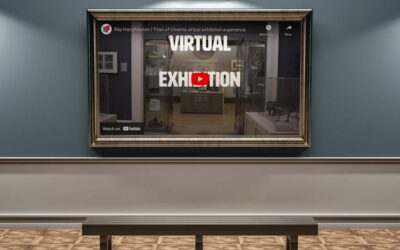Part 3: How Much Will Museum Digital Projects Cost Me?

Rachael Cristine Woody
This is the third and final post in this series: How Much Will Museum Digital Projects Cost Me? We’ll conclude our review of digital project costs by outlining resources you may need in the form of training and education, increased personnel capacity through contractors or vendors, or expertise you can tap into by working with a consultant.
Part 1 of this series outlined the variety of digitization equipment options and Part 2 covered digitization software, the museum Collections Management System (CMS), and the Digital Asset Management System (DAMS).
Please note: This post provides cost estimates to inform your initial planning, but in order to calculate an accurate budget for your museum digital project you’ll need to research and solicit quotes for educational offerings, contractors, vendors, and consultants.
5. Training, Workshops, Classes, or Certificates
If you have in-house museum personnel you may have the option to tap existing staff for digital project work. If these staff members aren’t already familiar with digital projects, digitization techniques, specialty equipment and software, or best practices, they need to attend a training, workshop, or class. If this isn’t a 1-time digital project event, then it may also be worth supporting staff to seek additional education via a certificate program.
Areas to Consider:
- Digital preservation
- Digitization techniques; for examples check out the Cultural Heritage Imaging training and workshop options
- Digital asset certificate programs; for example, the Digital Archives Specialist (DAS) Curriculum and Certificate Program offered by the Society of American Archivists.
Cost Range: $250 – $10,000
Cost will depend on the following factors:
- The length and substance of the session
- If travel is required (either to host the facilitator locally or send staff to attend in-person)
- If more than one session is required (for a class and/or certificate)
- If a grant or hosting institution is covering attendance costs
6. Contractors, Vendors, Consultants
There are a few instances in which hiring a contractor, outside vendor, or consultant can be beneficial. For example, when:
- There’s little to no staff time for the project
- You don’t have the right equipment or software
- There’s no budget or working space for the right tools and personnel needed
- Complicating factors like: multiple partners mixed collections, and backend or frontend customization needed
- You want someone to lead you through the process from beginning to end, limiting staff overwhelm and protecting staff time.
- You need an outside expert to supplement for expertise needed
Cost Range: $25/hour for entry-level focused strictly on digitization, up to $200+/hour for performing technically complex tasks that require expertise.
The cost of a contractor, vendor, or consultant will depend on the number of hours needed and/or items to be digitized, overhead costs (taxes, benefits, etc.), and level of skill needed.
A Note on Temporary Labor: Contractors can be a good option if the work is highly temporary in nature. If the work is consistent and ongoing without an anticipated end point then it’s more ethical and more cost effective to hire a staff member. For more on this, please read my post on: When and How to Ethically Create Museum Term Positions.
Conclusion
Digital projects have become an incredibly necessary part of our work in museums so that we can fulfill our mission to preserve and share our collections. With this mind, it’s critically important that we’re aware of all of the costs involved in order to support this work. The next trick will be learning how to balance these costs when tight budgets conflict with best practices and our need for the right tools and resources to do our jobs effectively.

Rachael Cristine Woody
Expert Rachael Cristine Woody advises on museum strategies, collections management, and grant writing for a wide variety of clients. In addition to several titles published by Lucidea Press, Ms. Woody is a regular contributor to the Think Clearly blog and a popular presenter. Register here for her upcoming webinar, “How Much Will Museum Digital Projects Cost Me?” on November 24, 2021. And learn about Lucidea’s Argus solution for powerful and innovative museum collections management.
Similar Posts
Examining the National Galleries of Scotland’s Harryhausen Digital Exhibit
In October 2020, the National Galleries Scotland (NGS), Ray Harryhausen | Titan of Cinema (October 2020 – February 2022) exhibition was meant to open and celebrate what would have been Harryhausen’s centenary year. Due to COVID the physical exhibit was forced to close...
Translating Physical Museum Exhibits to the Digital Realm
Exhibit design has long been a cornerstone of storytelling, crafting immersive, sensory-rich experiences within museum walls. But when the story moves beyond the physical space, how can the principles of exhibit design thrive in a digital realm?
Museum Exhibit Design as Storytelling Infrastructure
Exhibit design provides the infrastructure needed in order for stories to materialize. Before we consider how to translate the story told through physical exhibition to digital, it is important to understand how the physical aspects of the design support the story as...
Museum Forecast 2025: The Words We Use
This is the sixth year of our forecasts for the museum field! An incredible amount of change has occurred in the sector which brings with it new challenges and opportunities.




Leave a Comment
Comments are reviewed and must adhere to our comments policy.
0 Comments